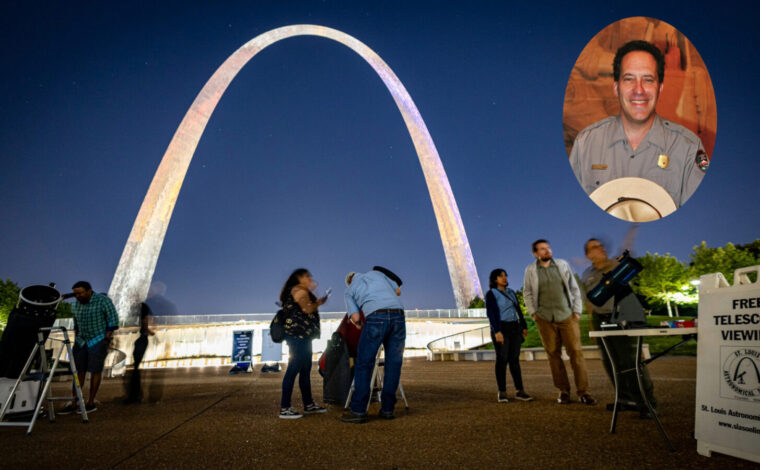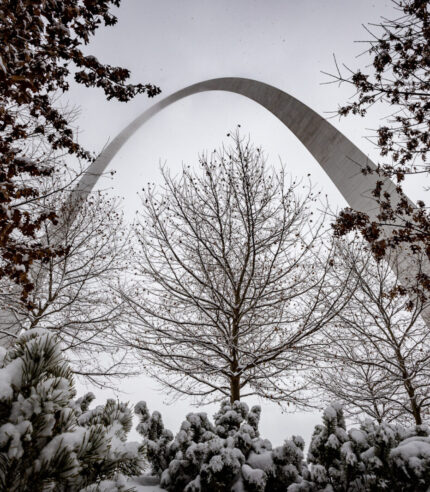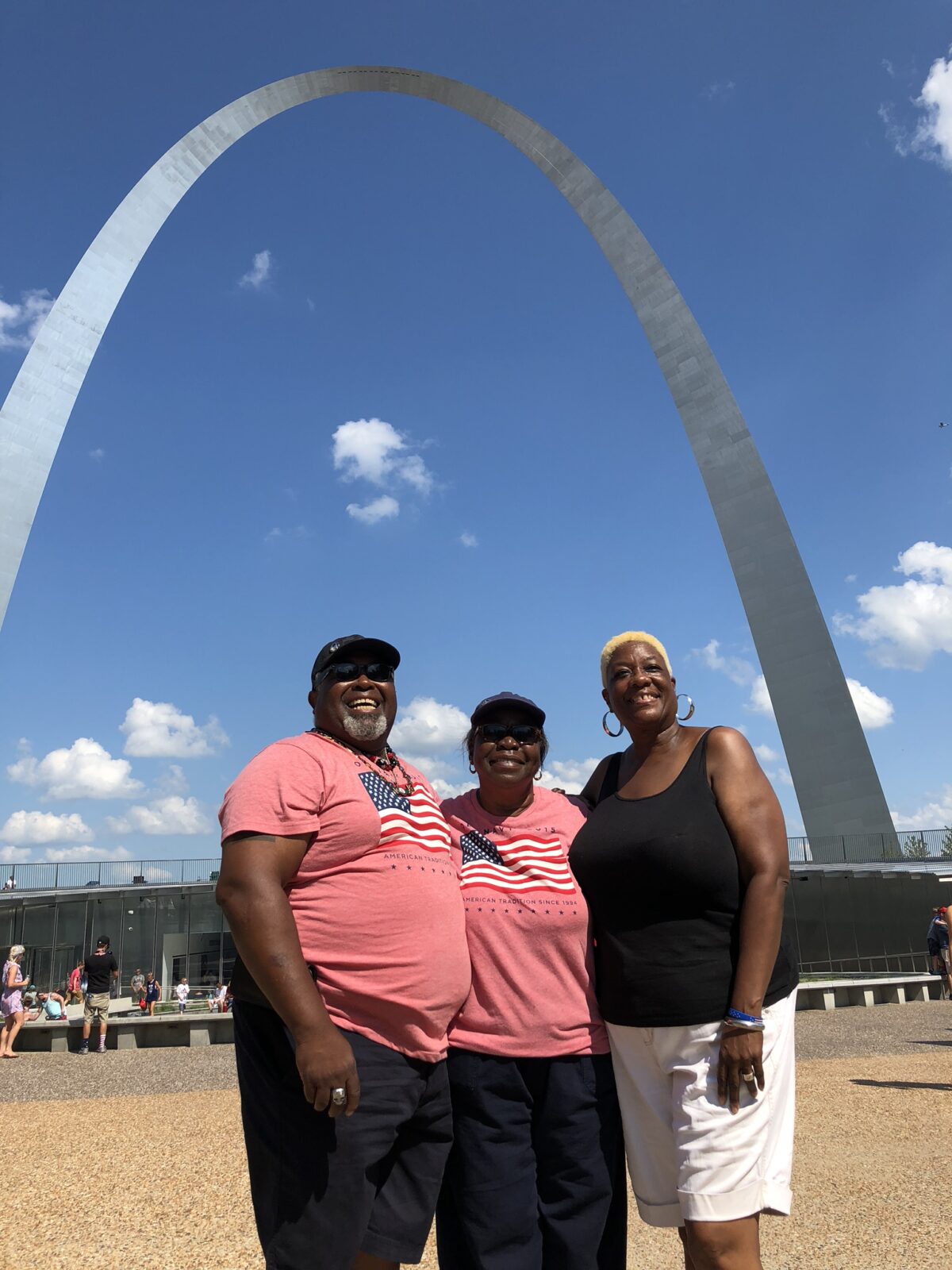Gateway Arch interviews Ranger Richard Fefferman, a.k.a. ‘Sky Ranger’
Share:
Hi, it’s me—the Gateway Arch! You know, 630 feet of shiny stainless steel and curious questions. I see a lot from up here, but when it comes to the stars, there’s one expert I always turn to: Ranger Richard Fefferman—aka the Sky Ranger. In this stellar Q&A, I sat down (well, as much as a monument can) with Richard to talk about his love of astronomy, what makes the night sky over St. Louis so special, and why you should absolutely come to one of his free Gateway to the Stars programs. Whether you’re a seasoned stargazer or someone who still thinks the Big Dipper is a breakfast cereal, this monthly event will expand your universe. Trust me—you’ve never looked at the sky (or me) quite like this. 🌌✨
Q & A:
Archie: Hi, Sky Ranger! We’ve known each other for a while, but how long have you been a National Park Service Ranger?
Ranger Richard: I was hired as a seasonal ranger at the park in the summer of 1988, when it was known as Jefferson National Expansion Memorial. Then became a permanent interpretive ranger here in November 1989. This is my one-and-only park!
Archie: How did you earn the title of “Sky Ranger” at the park?
Ranger Richard: I attended the “Sky Ranger” workshop at Bryce Canyon in the fall of 2009, and somehow this unofficial title has stuck with me at our park. I’ve written the monthly Sky Ranger blog on the park’s website since 2018.
Archie: What do you think makes the night sky over my national park so special?
Ranger Richard: We do have a lot of light pollution in downtown St. Louis, but we do have YOU to serve as a great backdrop for the telescope viewing. I see our urban setting as an opportunity. We can still get great views of the Moon and bright planets like Jupiter and Saturn — which are the biggest highlights for most people. Since most of our visitors are from out of town rather than local, I also hope that exposure to what is available to the sky here will entice them into checking out the night skies in their home area. We hope that they will visit their local astronomy clubs and national parks that provide viewing opportunities.
Archie: How did the Gateway to the Stars program get started?
Ranger Richard: I owe a lot to my wife — she was also a park ranger here for many years and is in the private sector now. Bryce Canyon National Park is probably the leader in public astronomy in NPS, and the Astronomical Society of the Pacific is a leader in space education. The two organizations partnered up to sponsor “Sky Ranger” workshops at Bryce. I wanted to go but was reluctant because our children were very young at the time, but my wife was very supportive. Park Management was aware of my long interest in astronomy (which goes back to the moon landings in the late 1960s) and was very kind to allow me to go. I learned a great deal at this workshop on how parks could put on public astronomy programs, and we began an annual program in the summer of 2010. Later, the park purchased a portable telescope to support the viewing. We are now in our sixteenth season of Gateway to the Stars. The St. Louis Astronomical Society has always partnered with us, with their members providing most of the telescopes for viewing and some of the event speakers.
Archie: What can visitors expect from a typical program?
Ranger Richard: There are always two parts to a Gateway to the Stars night. First, is an educational activity with an NPS Ranger talking about the sky or a night walk, an expert from the St. Louis Astronomical Society, local college professor, or graduate student. They have spoken about things like light pollution, bird migration, navigation, and space exploration. Every year, we offer the Junior Ranger Night Explorer workshop for kids to earn a special patch customized for our park. If the skies are clear, we put on telescope viewing on our entrance plaza after the educational program. With all of the city lights that we face, I always make sure that there is a bright moon available in the sky to see. Since it is so close, we get great views of craters, mountains, and lava plains on the Moon. Depending upon their visibility and how clear the sky is, we show Saturn and its rings, Jupiter and its Moons, and bright stars and star systems.
Archie: What’s been the coolest or most surprising reaction you’ve gotten from a visitor during a Gateway to the Stars program?
Ranger Richard: I think the most striking reactions are when we see Saturn or the Moon in our telescopes. Sometimes our guests are so amazed to see the rings or the craters that they think we are showing a slide or video rather than the real thing.
Archie: Each month has a different topic, like “Ghosts of the Arch Grounds,” “Kids Explorer Night,” or “Summer Star Trek.” How do you choose topics?
Ranger Richard: To keep things from getting stale and to encourage locals to come back on a regular basis, I do try to vary the programs. There are a couple staples, as Kids Explorer Night has sort of become our flagship program. Some years, we even give participants an opportunity to build and bring home their own working telescope. On August 2, we have world renowned storyteller Bobby Norfolk — who once worked at this park — talking about the star stories of cultures all around the world. The other staple is our October program, “Ghosts of the Arch Grounds.” It’s really about history and not the supernatural, but it does focus on some the adventures and tragedies associated with the area, including the St. Louis fire of 1849, construction of Eads Bridge, and other historical events. I mix in a couple of sky tours and at least one program about a significant issue like light pollution and its effect upon the sky, people, animals.
Archie: What’s your favorite constellation or specific star/planet to point out?
Ranger Richard: My favorite star in the sky is Vega, which shines overhead in the summer and has a bit of a blue tint to it. Unless it is Zubenelgenubi — the name just rolls off the tongue. I feel like I should be able to make something appear just by saying that name. It’s always awesome to show off Saturn and its rings, or craters on the Moon.
Archie: Have you ever spotted something unexpected through the telescope? (Tell me it was aliens.)
Ranger Richard: Many years ago, I was using the telescope at my college, sitting on top of a ladder and really trying to make out a very dim object. Sometimes if you turn your head just slightly, the outer part of your eye is a bit more sensitive and can help you glimpse something at the limit of vision. All of a sudden, this brilliant light zoomed through the view in an instant. I just about fell off the ladder, and it is probably a good thing that I had used the restroom not long before. It was actually an airplane that roared smack through the narrow field of view at high power, probably a 1,000 to one shot. I had been so focused on what I was doing that I didn’t see or hear it coming.
Archie: Why do you think astronomy is important for people to know or at least have a basic understanding of?
Ranger Richard: I think it is important for people to have an understanding of our place in the universe, and to know that in the scheme of things, we are tiny.
Archie (BONUS QUESTION): Last one, and it’s a fun one! If you could travel to space tomorrow, would you go? And who would you take with you as your co-pilot? Please pick me!!!
Ranger Richard: I am waiting for warp speed spaceships to take me to distant stars and galaxies. Until then, I think I want to stay down here to be with my family and friends.
Thanks so much to “Sky Ranger” Richard for taking the time to answer my questions! And congrats to him and this program on 16 years of teaching and entertaining Gateway Arch National Park visitors. You can learn more and meet him at an upcoming Gateway to the Stars event at the park. Click here for event details and his latest blog post.
Categories



